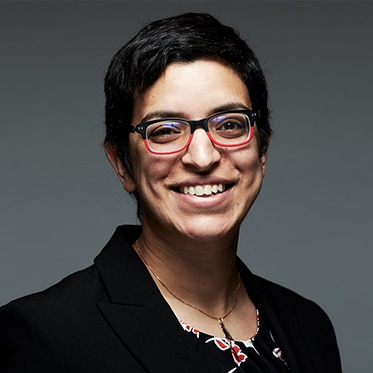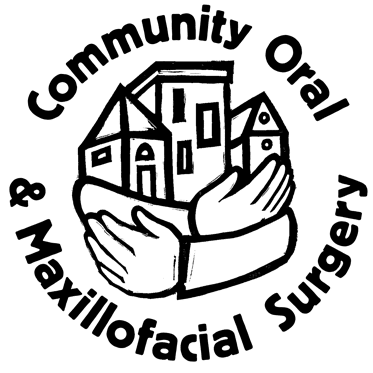If your jaw feels out of alignment—whether it affects how you eat, speak, or even how you feel about your appearance—you’re not alone. Jaw misalignment can create long-term challenges for both function and self-confidence. At Community Oral and Maxillofacial Surgery in Milwaukee, WI, we specialize in orthognathic surgery—a transformative procedure designed to correct jaw irregularities and restore balance, comfort, and symmetry.
We have created this article to guide you through what orthognathic surgery is, who needs it, how it improves health and aesthetics, and what to expect during the process or preparation for, and recovery from orthognathic surgery.
Here is what we will cover in this article:
- What is orthognathic surgery? Who is it for?
- How does corrective jaw surgery improve function and appearance
- What does recovery look like after corrective jaw surgery
- Consultation through post-op care: Review
- The safety of orthognathic surgery and potential risks
- Why patients in Milwaukee choose Community OMS for this advanced procedure
What Is Orthognathic Surgery and Who Needs It?
Orthognathic surgery, also known as corrective jaw surgery, is a procedure that repositions the upper jaw (maxilla), lower jaw (mandible), chin (genioplasty), or a combination of the three, to improve alignment, function, and appearance. It’s often performed in collaboration with orthodontic care to ensure the bite (occlusion) fits together properly.
You might benefit from orthognathic surgery if you experience:
- An overbite, underbite, or crossbite
- Facial asymmetry or a recessed chin
- Difficulty chewing or speaking
- Sleep apnea caused by airway obstruction
At Community OMS, Dr. Ruba Khader and the dedicated team evaluate each patient with a personalized approach. Outcomes of jaw surgery are carefully reviewed, and timing for surgery is carefully selected depending on the stage of growth of the face and jaws. For some patients, Dr. Khader can proceed with jaw surgery earlier than others.
How Does Jaw Surgery Improve Oral Health and Facial Aesthetics?
Orthognathic surgery is more than a cosmetic procedure. It’s a solution that addresses the foundation of your facial and dental structure.
Functional Improvements:
- Restores proper bite and alignment for easier chewing
- Reduces jaw strain and improves chewing efficiency
- In select cases, and in collaboration with sleep medicine providers, obstructive sleep apnea can be alleviated with surgery by improving the 3-dimensional airway anatomy
Aesthetic Enhancements:
- Balances facial features and jawline
- Corrects asymmetries for improved self-confidence
Long-Term Benefits:
- Reduces wear and tear on teeth and gums
- Promotes better oral hygiene by aligning teeth more effectively
Whether your goals are medical, aesthetic, or both, our team provides a comprehensive plan tailored to your needs and long-term wellness.
What Is the Recovery Process Like After Orthognathic Surgery?
Recovering from jaw surgery is a gradual but manageable process, and at Community OMS, we support you every step of the way.
Immediately After Surgery:
- Maximum swelling expected around 48-72 hours
- Swelling and bruising for the first 1–2 weeks
- Liquid or soft diet recommended for several weeks
- Initial healing typically allows return to school/work within 3 weeks (depending on the type of work)
Long-Term Healing:
- Return to solid foods: ~6–8 weeks
- Full bone healing: up to 12 months
- Progressively improving swelling for the first 12 months
- Continued checkups with Dr. Khader and your orthodontist
We utilize advanced tools like platelet-rich fibrin (PRF) or Platelet-rich Plasma to accelerate healing and reduce discomfort—just one of the many ways we combine innovation with patient care.
Community Oral and Maxillofacial Surgery is proud to be an opioid-safe practice. Even though you or your loved ones may require an opioid prescription after surgery, Dr. Khader and the team at Community Oral and Maxillofacial Surgery employ a preventative analgesia approach, including the utilization of extended-release local anesthetic injections at the time of surgery to minimize the use of any opioids.
What Can I Expect During the Orthognathic Surgery Journey?
Understanding the treatment timeline can make the process less overwhelming. Here’s what the typical journey looks like:
- Consultation and 3D Imaging
Detailed scans help us evaluate jaw alignment and create a customized plan. - Orthodontic Preparation
Braces are typically used to align teeth before surgery. During this phase, you will be asked to make a few appointments with the team at Community Oral and Maxillofacial Surgery to evaluate your progress. On average, we schedule 6-8 visits that are 2-3 months apart.
In general, orthodontic preparation is unique for each patient. This could last anywhere from a few short months to two years. - Preoperative appointment
During this visit, records will be obtained to allow Dr. Khader to plan your surgery using virtual surgical planning with specialized engineers. This will allow a simulation of your surgery that can be shared with you and your family.
Simulation also allows for custom-printed devices that will be utilized during surgery and that will reduce surgical time and improve accuracy.
At Community Oral and Maxillofacial Surgery, the team will spend one to two visits preparing you for what to expect after surgery. You will be as prepared as you can to undergo the procedure and succeed in your postoperative recovery. - Surgery Day
Performed in a hospital setting with the aid of general anesthesia. - Recovery Phase
Follow post-operative instructions, attend follow-up appointments, and gradually resume normal activities. - Final Orthodontic Adjustments
Once healing is complete, your orthodontist will fine-tune your smile.
We work closely with your orthodontist and healthcare team to ensure a smooth, coordinated treatment from start to finish.
Is Orthognathic Surgery Safe? What Are the Risks?
Like any surgical procedure, orthognathic surgery carries some risks—but when performed by a board-certified surgeon like Dr. Ruba Khader, with over two decades of experience, complications are rare and often preventable.
Common Side Effects:
- Swelling and discomfort
- Temporary numbness or tingling
- Minor sinus issues (depending on surgical area)
Less Common Risks:
- Infection or bleeding
- Nerve damage
- Relapse or need for revision surgery
At Community OMS, we combine evidence-based protocols, 3D imaging, and digital planning to minimize these risks and enhance surgical precision.
Why Choose Community Oral and Maxillofacial Surgery for Orthognathic Surgery in Milwaukee, WI?
When it comes to something as significant as jaw surgery, expertise and compassion matter. Here’s why Milwaukee patients choose us:
Take the First Step Toward Better Jaw Function and a Confident Smile!
If jaw misalignment is affecting your quality of life—physically or emotionally—orthognathic surgery could be the life-changing solution you’ve been searching for. At Community Oral and Maxillofacial Surgery in Milwaukee, WI, Dr. Ruba Khader offers compassionate, innovative, and patient-centered care rooted in surgical excellence.
Ready to take the next step? Contact us today to schedule your consultation and start your journey to better health and confidence.
Sources:

Dr. Ruba Khader
Dr. Ruba Khader is a board-certified oral and maxillofacial surgeon and the founder of Community Oral and Maxillofacial Surgery in Milwaukee, WI. With advanced training from Tufts University and over a decade of experience in both academic and clinical settings, Dr. Khader is known for her compassionate approach and commitment to excellence in surgical care. She combines state-of-the-art technology with evidence-based practices to deliver personalized treatment for each patient. A former president of the Wisconsin Society of Oral and Maxillofacial Surgeons, Dr. Khader takes great pride in serving her community with integrity, skill, and heart.

